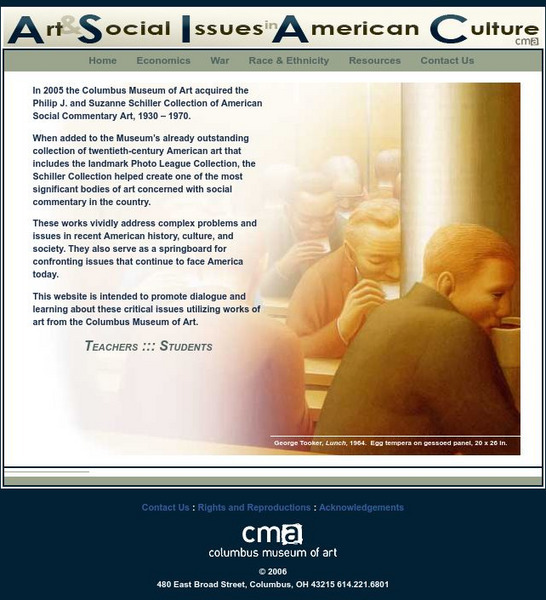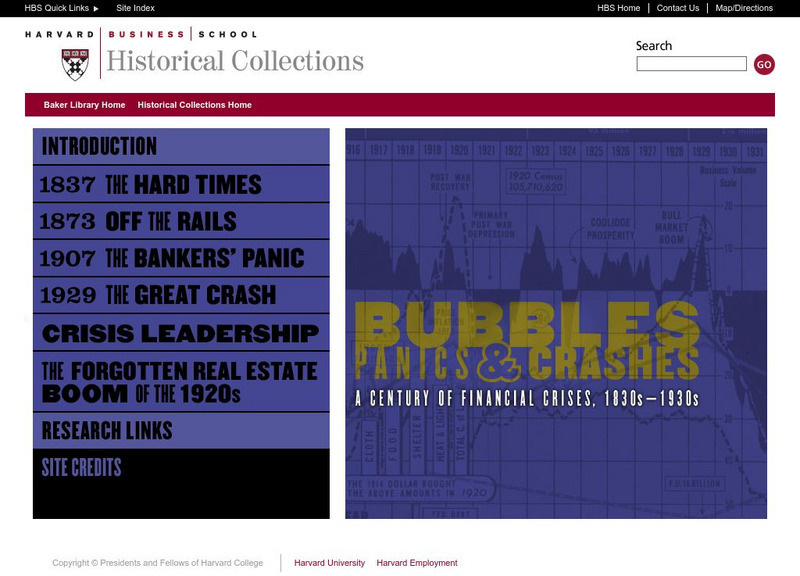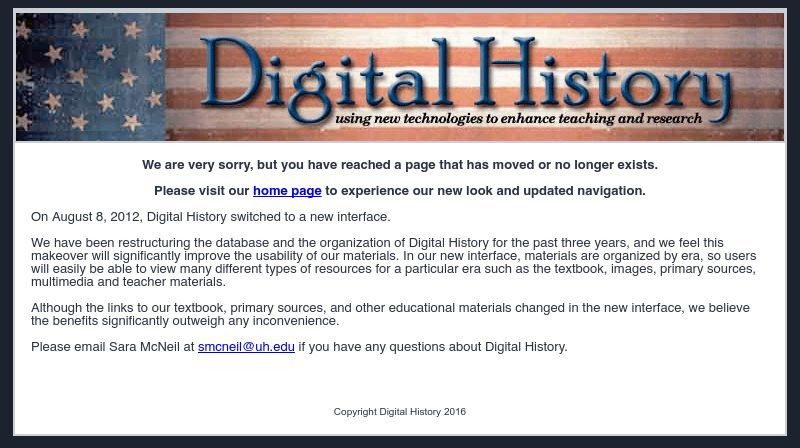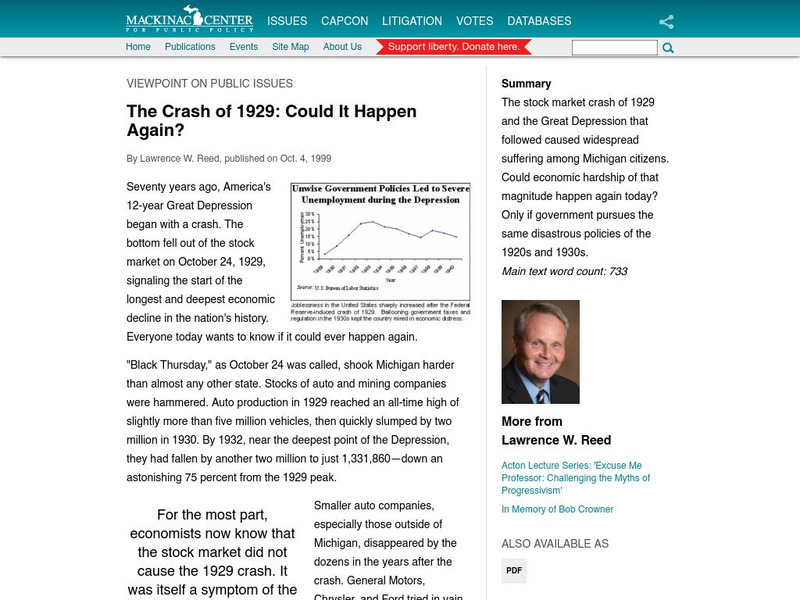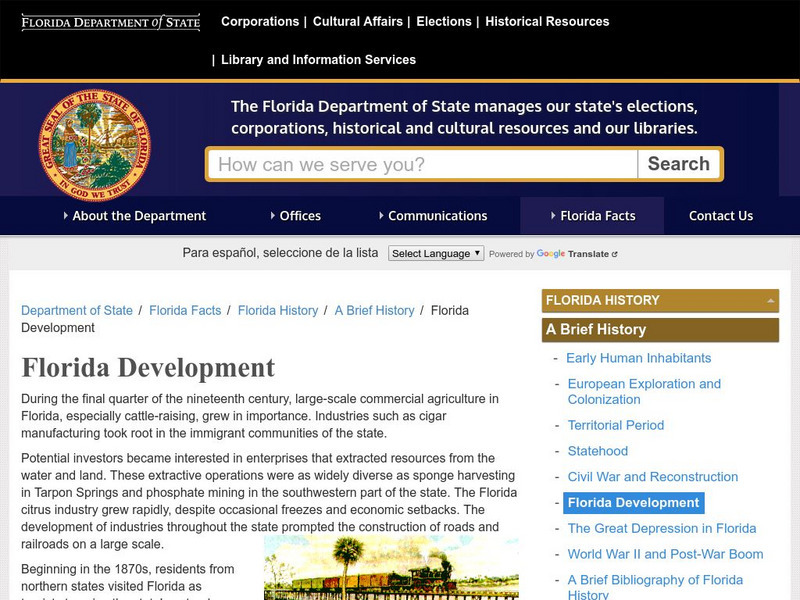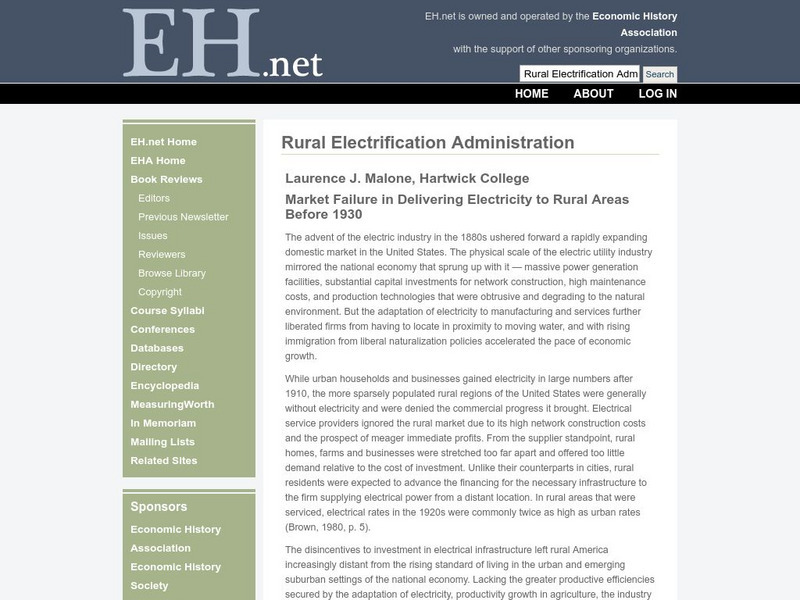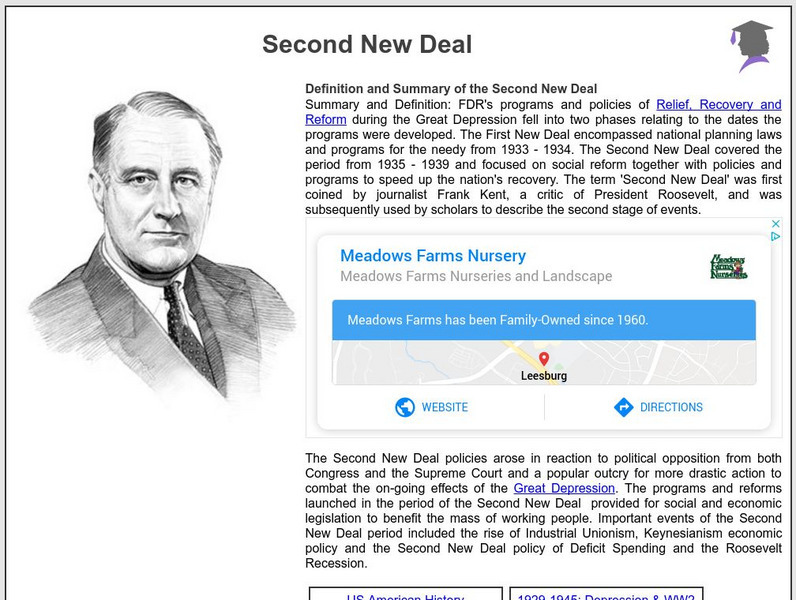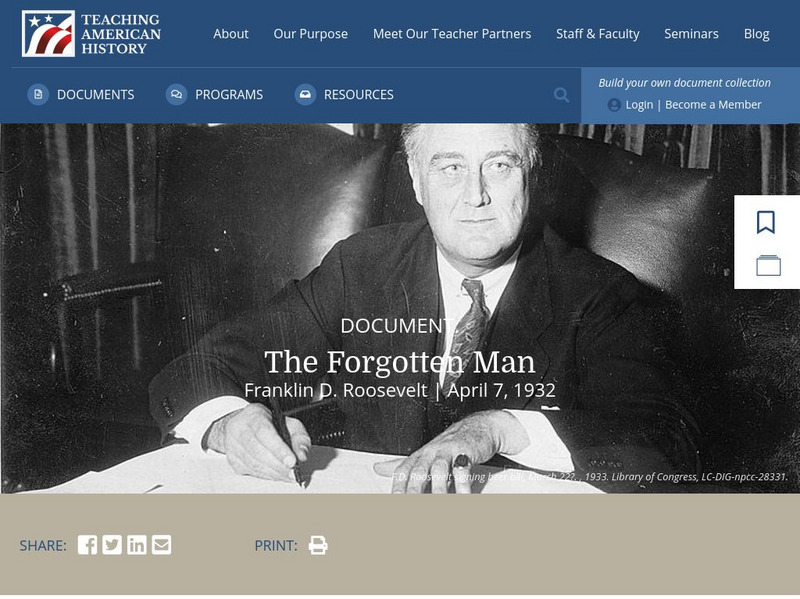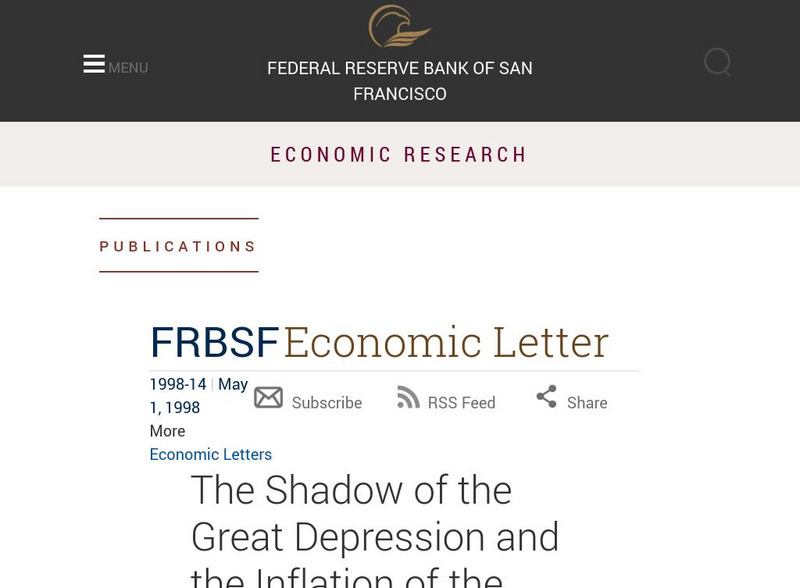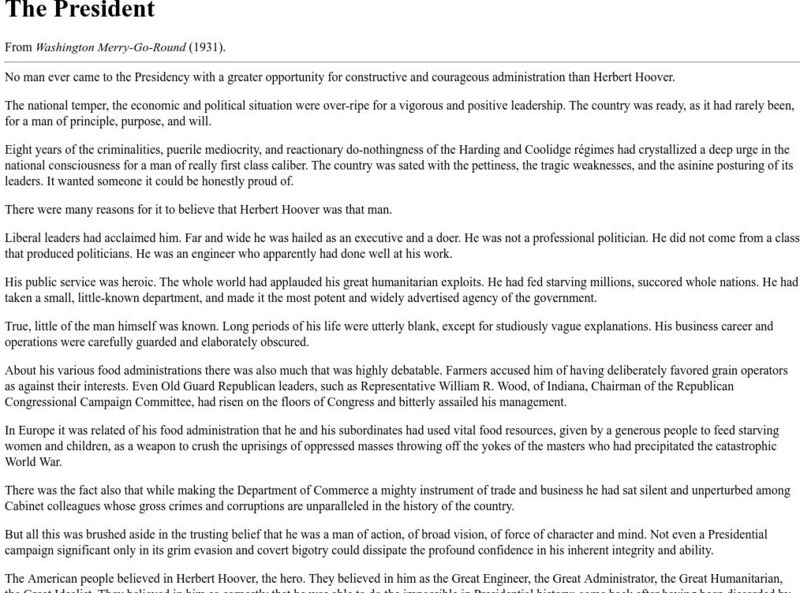Department of Defense
Do Dea: Ap Us History: Unit 7: Facing Challenges at Home and Abroad
This extensive learning module examines the role of economic fluctuations in creating new demands on the government to design reforms and how the United States became a dominant military, political, cultural, and economic force in the...
Other
Columbus Museum of Art: Art and Social Issues in American Culture
Great reference tool for exploring American history and culture through artistic images. The visual images shown relate to issues Americans face today: economics, war, and race & ethnicity. Included is a teacher resource page with...
New Deal Network
The New Deal and the Negro: A Look at the Facts
Detailed essay discussing the socio-economic status of African Americans during the Great Drepression. Includes tables of employment and relief statistics.
Other
Harvard: Historical Collections: Bubbles, Panics & Crashes
Financial crises have happened before, and - if history is any guide - they will happen again. One year after the subprime mortgage crisis, this Baker Library Historical Collections exhibit documents four major crises that occurred in an...
National Humanities Center
National Humanities Center: America in Class: America in the 1920s: Prosperity: Crash
The National Humanities Center presents collections of primary resources compatible with the Common Core State Standards - historical documents, literary texts, and works of art - thematically organized with notes and discussion...
Khan Academy
Khan Academy: The Keynesian Perspective on Market Forces
They Keynesian economic perspective argues for government intervention in certain cases, but market forces are still valuable.
Lin and Don Donn
American History Lesson Plans: Fdr's Fireside Chats
A great lesson plan to examine Franklin D. Roosevelt's first fireside chat and apply the format in explaining a current economic problem.
Digital History
Digital History: The Market Crashes
Read about how in just five days a shaky stock market crashed and helped plunge the country into the Great Depression.
Other
Mackinac Center: The Crash of 1929 an Analysis
Analyzes the Stock Market Crash of 1929 and looks closely at the factors leading up to the Crash. Gives a perspective from the State of Michigan. A Graph is included to show the rise of unemployment during the Great Depression....
Council for Economic Education
Econ Ed Link: The Wizard of Oz Visits Japan
Deflationary conditions in the United States have not returned since the Great Depression. Instead, U.S. policymakers have frequently found it necessary to battle inflation over the past sixty years. While not a problem in America,...
Council for Economic Education
Econ Ed Link: The Road to Emerald City Is Paved With Good Intentions
'The Wizard of Oz' is perhaps the most popular film ever made. Generations of families have enjoyed this classic tale of Dorothy's struggle to return home from a faraway land. What is not well known, however, is that 'The Wonderful...
Digital History
Digital History: New Deal Programs [Pdf]
Here's an exercise in which students use data provided about possible New Deal programs and lets them decide which are economically feasible and helpful as a way to address the Great Depression. Use the provided chart to keep track of...
Digital History
Digital History: The New Dealers
Franklin D. Roosevelt brought in many different thinkers to help find ideas to fix the Great Depression. Read about their ideas and the ways they instituted their ways of thinking.
State of Florida
Florida Historical Resources: Florida History: Florida Development
In this resource, the growth and development of Florida from the late 1800's until the Great Depression is the focus. Large scale agriculture, tourism, railway construction, and real estate were all highly successful during that time.
Teaching American History
Teaching American History: Commonwealth Club Address
An address by Franklin D. Roosevelt in 1932 was delivered to win over the American people on the premise of economic security during the tremendous strife brought about by the Great Depression.
Other
Eh.net: Rural Electrification Administration
A very interesting assessment of the success of the Rural Electrication Admininstration in bringing electricity to rural areas that private utilities had been unwilling to service. Read about the results in terms of needed jobs in the...
Siteseen
Siteseen: American Historama: Second New Deal
Discussion of the programs and reforms launched in the period of the Second New Deal that provided for social and economic legislation to benefit the mass of working people.
Country Studies US
Country Studies: United States History: The Second New Deal
This site describes how as a result of mounting criticisms and a need for more economic relief and recovery, FDR introduced another series of programs, known as the Second New Deal, aimed at fighting unemployment and poverty and...
US National Archives
Our Documents: National Industrial Recovery Act (1933)
Along with an image of the first page of the National Industrial Recovery Act is an excellent description of what it entailed and the high hopes of improving the economy its passing engendered. You can also read about the opposition to...
Teaching American History
Teaching American History: Franklin D. Roosevelt: The Forgotten Man
Franklin D. Roosevelt delivers a campaign speech directly to the heart of the lower economic classes of the United States. His goal is to win their votes by offering solution to rescue them from their financial distres as the nation...
Khan Academy
Khan Academy: Tracking Real Gdp Over Time
Read about fluctuations in Gross National Product (GDP) from year to year.
Curated OER
Canada:a People's History
A clear, concise overview of Canada directly after the war. Clicking on the links gives more in depth information.
Federal Reserve Bank
Federal Reserve Bank: Inflation of the 1970s
This U.S. Fed white paper defines the reasons for this decade of high inflation.
Other
The President: Herbert Hoover
Excerpt from the book, "Washington Merry-Go-Round" published in 1931 discusses why Hoover failed as a president and the events following the Stock Market Crash of 1929.

